A Christmas Feast, Experienced With Dishes From Around the World
Experience an international Christmas without any travel by preparing these traditional foods
/https://tf-cmsv2-smithsonianmag-media.s3.amazonaws.com/filer/b1/b7/b1b7c117-55a1-4229-a743-97cf819d33ac/buche_de_noel_edit.jpg)
Some Christmas traditions feel as worn as that Rudolph sweater you pull out of the closet year after year, but there are many unique ways to ring in the holiday. These samplings (both edible and otherwise) of how others around the globe commemorate Christmas can help spice up your season.
Southern Italy
While the Feast of the Seven Fishes, or Festa dei sette pesci, is a big Christmas Eve tradition in Italian-American families, it's not actually part of the traditional festivities in Italy itself. However, in southern Italy the consumption of fish on Christmas Eve is indeed a local custom (the number of actual dishes is irrelevant). Here it's less about the opulence of the feast and more about the simplicity of the dish, which is generally associated with fasting. Types of common Christmas Eve dishes include baccalà (salted cod), either pan-fried or baked with potatoes, and zuppa di pesce, a delicious shellfish and fish soup. They're accompanied, of course, by plenty of red wine, ample amounts of olive oil (the more generous the pour on everything and anything, the better) and—if you're lucky—Altamura bread—quite possibly the best bread in Italy.
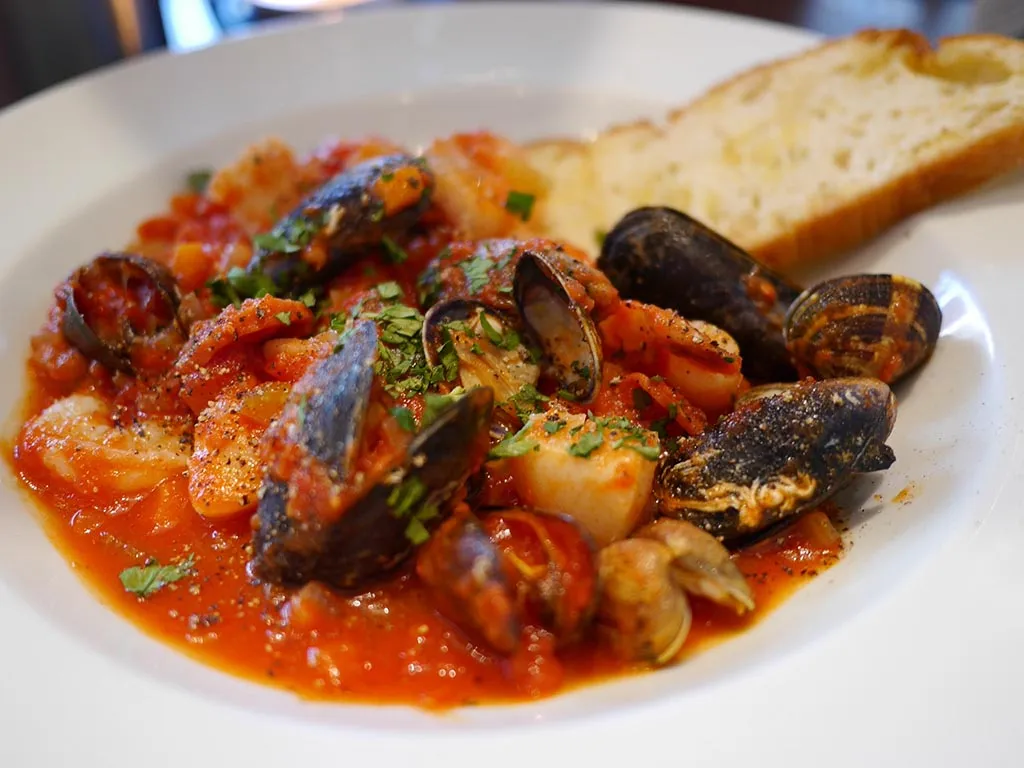
On Christmas Day the festivities continue with a lunch time meal that begins with pasta such as orecchiette, a tiny, ear-shaped pasta that's typical of the region, flavored with tomatoes and ricotta forte cheese, followed by either more fish or a meat dish like lamb. The region's go-to dessert is panettone, a spongy loaf of sweet bread filled with golden raisins and candied orange zest. After eating, the family stays gathered around the table, perhaps with a bottle of sweet wine or sambuca and a bowl of mandarins, playing card games like setto e mezzo, scopa and tressette.
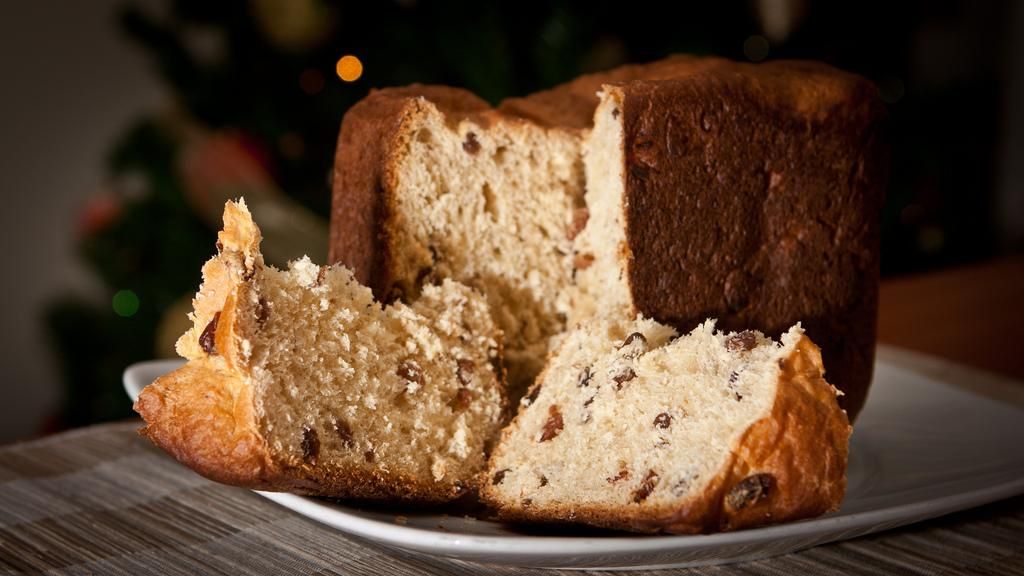
France
While culinary traditions in France vary from region to region, one that's particularly popular in the country's north is le Reveillon. This lavish, multi-course feast typically begins after midnight mass on Christmas Eve and lasts well after the sun comes up, complete with dancing and plenty of wine. Although many French also host a Reveillon on New Year's Eve, for most this is one night of the year when culinary decadence abounds. Dishes include oysters grilled or served on the half shell, smoked salmon with crème fraîche, escargot, the iconic scallops in cream sauce dish known as coquilles St. Jacques and even roasted goose. In southern France's Provence region, a version of the meal concludes with lei tretze dessèrts, a series of 13 desserts that historically represent Jesus and the apostles. Although it sounds like a lot of sweets, these treats are small dishes ranging from dried plums to grapes to nougat that are left on the table for three days, until December 27. However, one that's almost always included is the bûche de Noël, or Yule log, a chocolate-filled cake that symbolizes the logs families gathered around for warmth as part of the Christmas tradition.
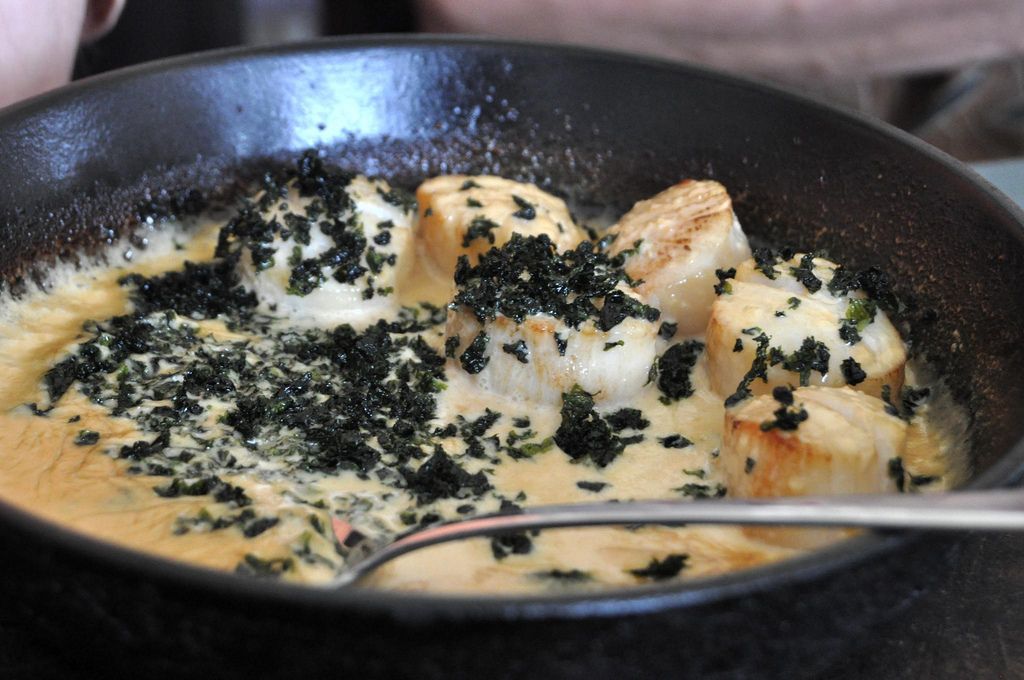
Canada's Quebec Province (as well as New Orleans) also boasts its own version of le Reveillon, which almost always includes tourtière, a meat pie with potatoes, onions and spices. As you can imagine, Christmas Day is reserved for rest.
Czech Republic
The main holiday meal in the Czech Republic is typically served in the evening on Christmas Eve, and for many, it's the first meal of the day. Traditional dishes include fish soup and fried carp served with potato salad, best when prepared a day in advance. Sweets are another mainstay: goodies include gingerbread cookies, apple strudel and vánočka, a buttery type of twist bread. Tables are always set for an even number of guests to ward off bad luck.
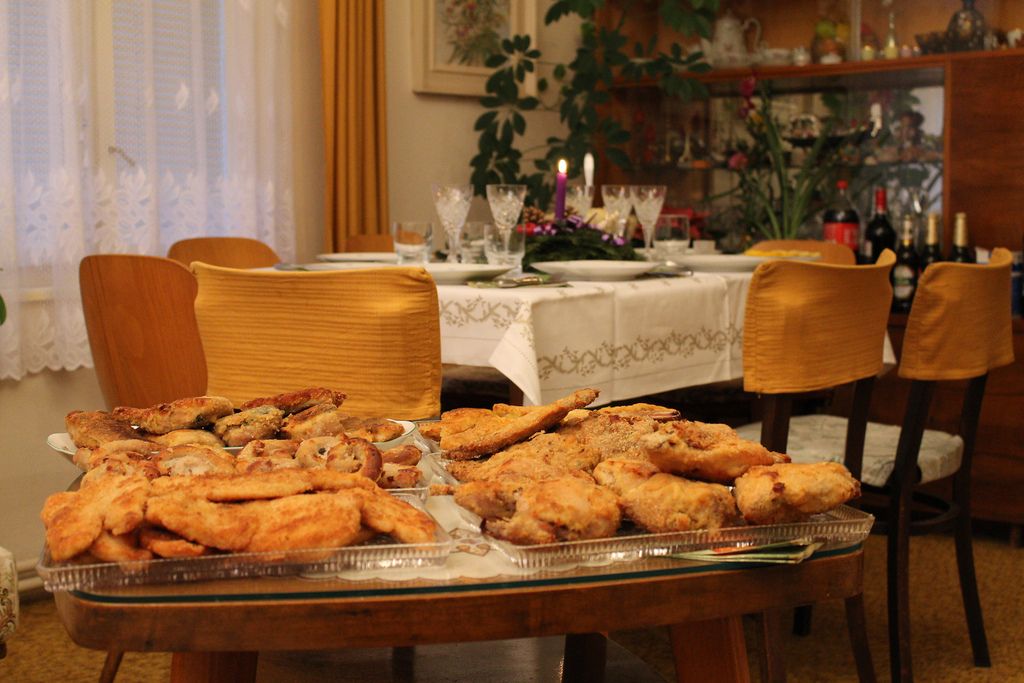
One of the biggest differences between Christmas in the Czech Republic and in countries like the U.S. and Canada is that the primary gift-giver for kids is Ježíšek, or 'Little Jesus', crawling in through a window when the family is in another room. Once he arrives (usually indicated when one of the parents' rings a bell), the family moves from the dinner table to the Christmas tree to open gifts.
Norway
Many Norwegians begin their official Christmas celebrations on December 23 with 'Little Christmas,' which includes decorating the tree and snacking on risengrynsgrøt, a creamy rice pudding served hot with butter and cinnamon. Families often hide an almond in the pudding, and whoever gets it wins a marzipan pig. When the five o'clock bells ring on Christmas Eve throughout Norway, it's time for the official holiday meal to begin. Popular dishes include roasted pork belly, or ribbe, served with a side of pork sausage, potatoes and sauerkraut, and boiled cod, which is especially popular in southern coastal towns like Bergen and Stavanger. Pickled herring is usually on hand as an accompaniment for aquavit, the country's herb-infused national spirit. There's also plenty of gløgg—Norway's take on mulled wine—and dark beer. For dessert, many families make kransekake, a multitiered cake resembling a Christmas tree. It's made with almonds, confectioner's sugar and egg whites and often decorated with Norwegian flag toothpicks.
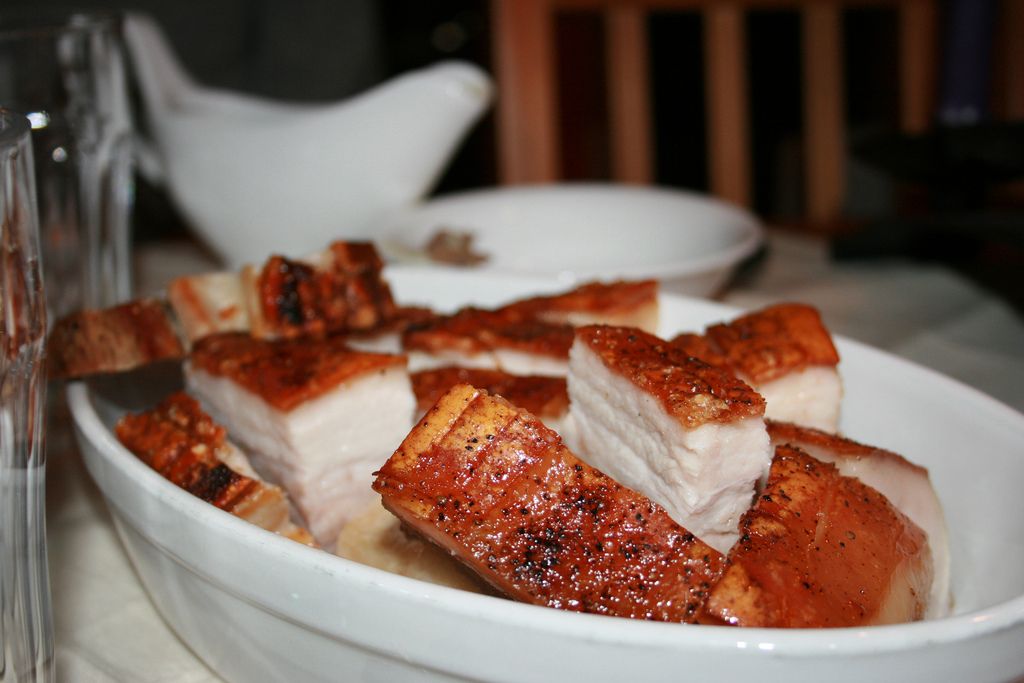
Despite Santa residing in nearby Lapland, Norwegians have their own gift-giver: Julenisse, a similar character who wears a red stocking cap, sports a long white beard and lives in the Norwegian forest. He typically shows up on Christmas Eve—sometimes knocking at the door, other times in secret, but always with plenty of gifts in hand.
Christmas day typically involves a late brunch or early dinner, and the rest of the week is spent visiting with family and friends. Tip: If you really go Norwegian with your festivities, use only white lights—not colored—for your holiday décor.
Peru
In Peru, Christmas Eve is known as Nochebuena, or Good Night, and it's when families gather together around the nativity scene (Christmas trees aren't so prevalent in most South American countries), exchange gifts and open up presents left at the manger by Santa, except in the Andean regions, where gifts are traditional exchanged on January 6, the Feast of the Epiphany. Nochebuena is also the night of the main Christmas meal, which typically takes place after the misa de gallo, or 10 p.m. Rooster Mass. Roast turkey is usually the main dish, accompanied by side dishes such as tamales, garlic-seasoned rice and applesauce. Similar to southern Italy, panettone is a dessert favorite, served with a cup of steaming and spicy Peruvian hot chocolate. Champagne is also a staple, especially for toasting the birth of the baby Jesus, whose figure is placed in the nativity scene after mass. Once the kids open their gifts they head to bed, leaving the adults to continuing imbibing and celebrating until the early morning hours.
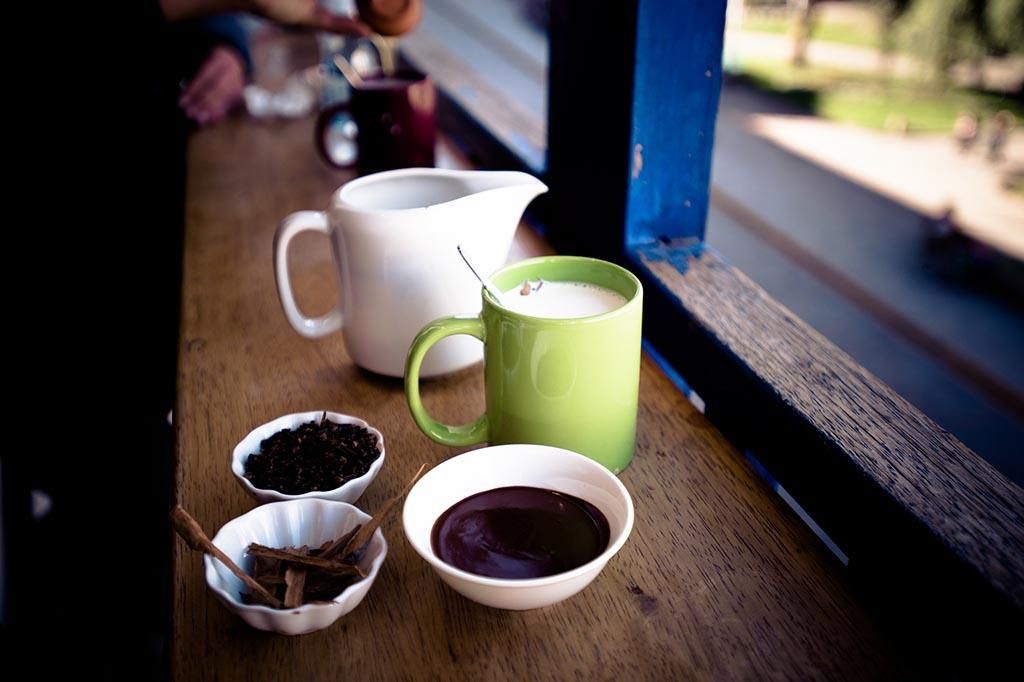
Philippines
Christmas is one of the Philippines' most anticipated and revered holidays, with Christmas Eve being the night of their traditional Nochebuena feast. Here this means dishes like queso de bola or Edam cheese; puto bumbong, a purple-colored glutinous rice steamed in bamboo tubes and served with butter and a mixture of sugar and coconut; a sweet bread known as ensaymada and cured ham. This family meal is served on a table decorated with brightly colored fruits and typically takes place after midnight mass, sometimes lasting until sunrise. Christmas morning is a time for visiting with extended family, notably older relatives, with lunch to follow.
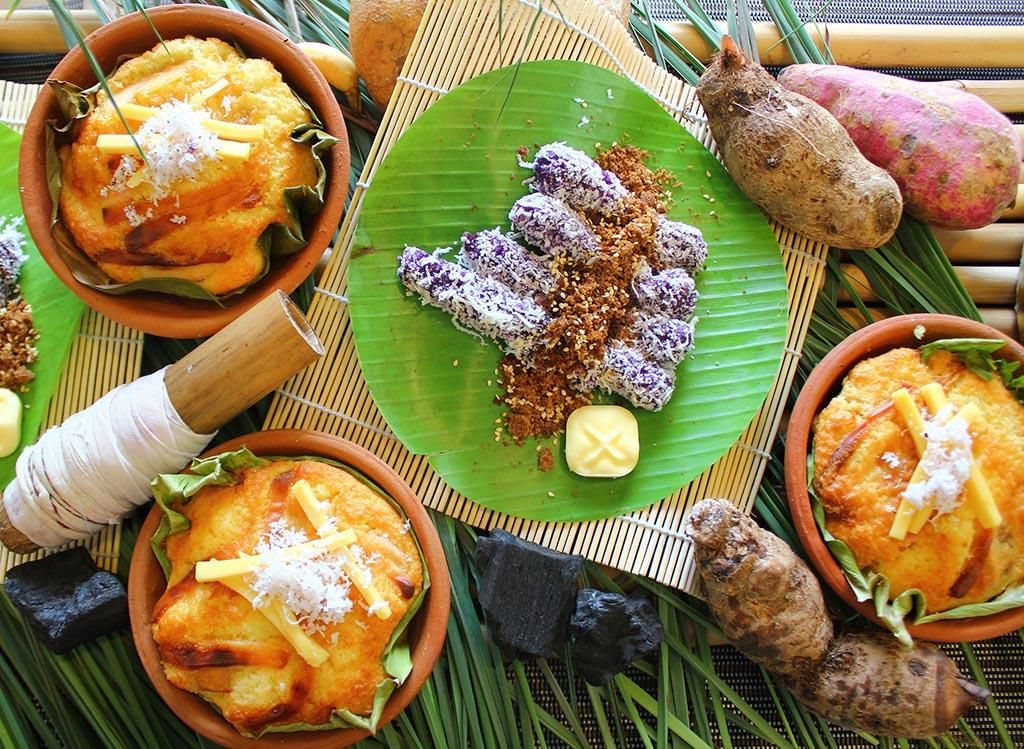
Zimbabwe
Europeans first brought their Christmas traditions to Zimbabwe, and today they're part of the local fabric, including things like Santa Claus and singing Christmas carols. The holiday here is a summer affair, meaning foods such as fruits, sadza—a cornmeal staple—and roasted meat that is often cooked whole over an open fire and shared outdoors with the entire village. This can be any game meat from goat to ox to warthog. However, a particularly special Christmas treat for Zimbabweans is chicken with rice. This typically expensive meal is the main dish on Christmas Day.
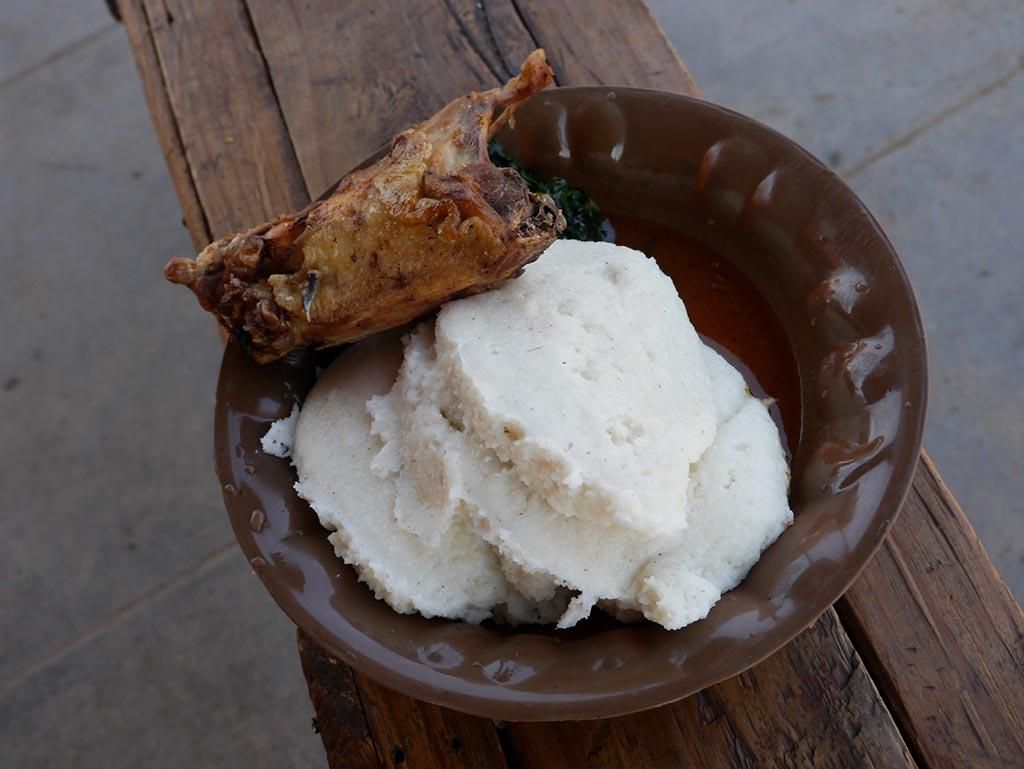
/https://tf-cmsv2-smithsonianmag-media.s3.amazonaws.com/accounts/headshot/LauraKiniry.png)
/https://tf-cmsv2-smithsonianmag-media.s3.amazonaws.com/accounts/headshot/LauraKiniry.png)